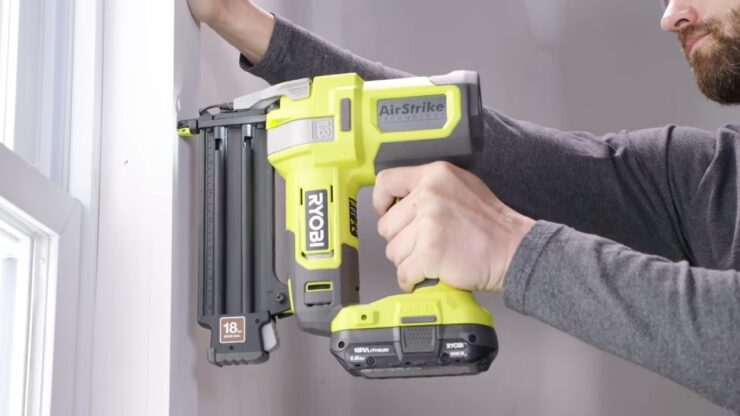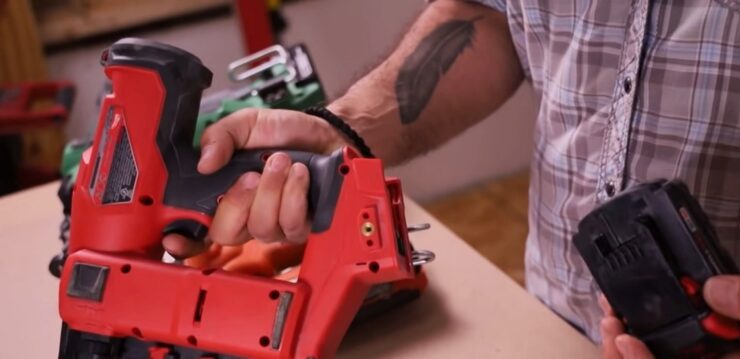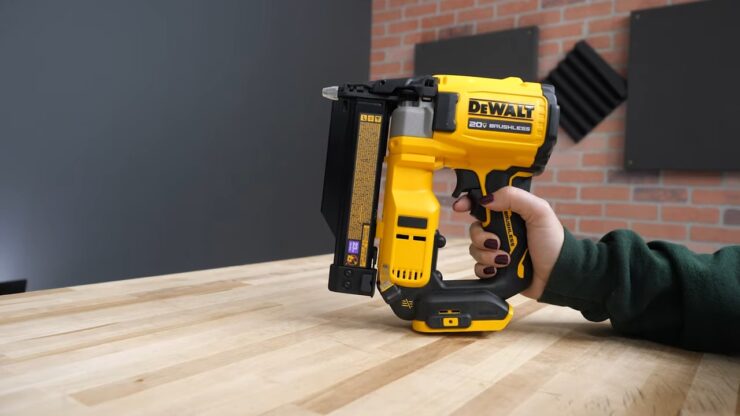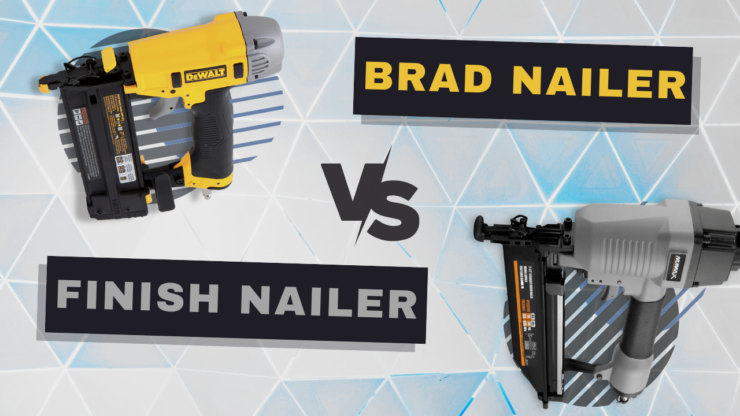As a contractor, you likely have more than one nailer at your disposal. So, it’s important to know the main differences between a brad nailer and finish nailer if you want to get the most out of your tool.
This blog post will cover the main differences between these two types of nailers, as well as give you some tips on how to use each one effectively. By understanding the differences between these two tools, you’ll be able to get the most out of every project.
What is a Brad Nailer?

A brad nailer is an important tool for woodworking. It is a type of pneumatic nailer that uses lead or zinc-plated brads to fasten pieces of wood together.
Another important tool for woodworking is an oscillating tool.
The brad nailer is a versatile tool and can be used for a variety of purposes, such as joining boards, creating trim, and hanging pictures.
How a Brad Nailer Works
The brad nailer works by using a firing pin to send a high-velocity copper rod through the barrel of the nail gun. The round nails are then driven out of the barrel one at a time by the hammerhead, which pushes them down and into the piece of wood you’re targeting.
To hold the wood in place, the brad nailer typically has a clamping device that attaches to the top of the piece of wood and clamps down onto it. This stops it from moving while the nail gun fires.
Types of Brad Nailers
There are three types of brad nailers: pneumatic, electric, and cordless.
Pneumatic brad nailers use compressed air to drive the nails into the wood. They are usually heavier and larger than electric or cordless models, and they require a compressor to operate.
Electric brad nailers use an electric motor to drive the nails into the wood. They are usually smaller and lighter than pneumatic or cordless models, and they require no compressor to operate.
Cordless brad nailers use batteries to power the motor, and they are small enough to be used in tight spaces. They have a limited range, however, so you may need to recharge them often.
What to Look for in a Brad Nailer
When looking for a brad nailer, there are a few things to keep in mind. Always make sure that the nailer has enough power to drive the nails into the wood. Then, look for a nailer with an ergonomic design so you can easily use it.
Be sure to consider the type of nails that the nailer can use. And finally, test out the battery before buying it so you know how long it will last.
What is a Finish Nailer?

A finish nailer is a handy tool that can come in really handy when you need to do some basic carpentry work. These types of tools typically have a range of features, including a magazine (or drum) that holds nails, and a gun that fires the nails.
Finish nailers are great for attaching things like trim, baseboards, and door hinges. They’re also perfect for quickly finishing projects by attaching small finishing details like crown molding or tapered head cabinet doors.
Types of Finish Nailers
There are three main types of finish nailers: pneumatic, electric, and hand-held. Pneumatic nailers use compressed air to fire nails. They are the most popular type and the ones you see most often in stores. Electric nailers use electricity to shoot nails.
They are easier to use than pneumatic nailers but less common. Hand-held nailers use either an air or electric spark to fire nails. They are portable and good for small jobs, but they can be more difficult to control than other types of finish nailers.
Using a Finish Nailer
When using a finish nailer, it’s important to follow some basic safety guidelines. First, always wear protective gear, including eyewear and hearing protection.
Next, use caution when firing nails at high speeds; over-firing can cause damage to your nails and your work surface. Lastly, make sure you place the nails exactly where you want them; improper placement can cause holes in your finished project.
The Main Differences Between Brad Nailer and Finish Nailer
The main difference between a brad nailer and a finish nailer is the size of the nails. A brad nailer uses smaller, more rounded nails than a finish nailer, which makes it good for nailing thin materials, while Finish Nailers are designed for thicker materials.
Additionally, finish nails are often pre-treated with an adhesive before being inserted into the wood, helping them hold better in tough spots.
Also, Brad Nailers use a hammer action to drive the nails, while Finish Nailers use a bit more of an electric motor.
In addition, Brad Nailers tend to be less expensive than Finish Nailers.
Which One is Right for You?

If you’re looking to buy a nailer, there are several things to consider. What type of nails do you want to use it on? Brad Nailers are good for using galvanized nails, while Finish Nailers are better for using wood or plastic nails.
Decide if you need a cordless or corded model. Cordless models are usually lighter and have more battery life, but they may not be as powerful. Corded models are heavier and will last longer on a charge, but they may not be as light or portable.
If you’re still unsure which tool is the best for you, read our article about the differences between pin nailer and brad nailer.
Conclusion
If you’re looking for a nail gun that will do the job well and look good doing it, then you should definitely consider investing in a Brad Nailer. These guns are known for their high-quality construction and impressive performance, which is why professionals often use them when building things like cabinets or furniture.
In contrast, Finish Nailers are generally used by homeowners and DIYers who want an easy-to-use nail gun that doesn’t require too much maintenance.

